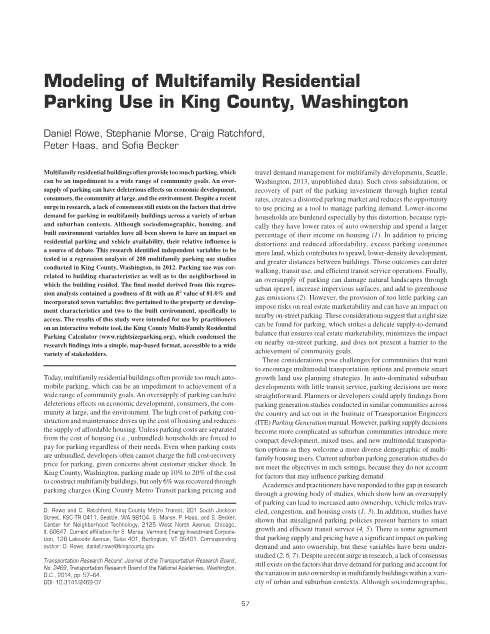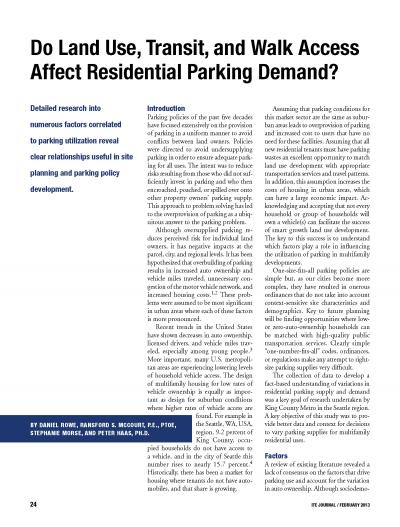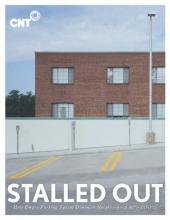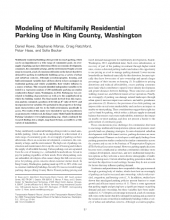Stalled Out: How Empty Parking Spaces Diminish Neighborhood Affordability explores the relationship between unused parking and neighborhood affordability. Many cities, including Chicago, mandate the minimum number of parking spaces new developments need to build. As the report points out,...Read more
Our Work
Topic: Parking Utilization
Displaying 1 - 8 of 8Tool
topics: Climate, Data Analysis, Housing, Parking Utilization, Policy, Transportation
GreenTRIP Connect is a California statewide tool that allows users to evaluate a prospective housing development’s potential to reduce greenhouse gas emissions due to driving.
Tool
topics: Data Analysis, Housing, Parking Utilization, Policy, Transportation
The Park Right DC calculator helps community members, developers, zoning bodies, planners, and other stakeholders better understand parking utilization in multi-family residential buildings in the District of Columbia.
Publication
topics: Housing, Parking Utilization, Transportation
Stalled Out: How Empty Parking Spaces Diminish Neighborhood Affordability explores the relationship between unused parking and neighborhood affordability. Many cities, including Chicago, mandate the minimum number of parking spaces new developments need to build. As the report points out, however,...
Publication
topics: Housing, Parking Utilization, Transportation
The District Department of Transportation and the District of Columbia Office of Planning recently led a research effort to understand how parking utilization in multi-family residential buildings is related to neighborhood and building characteristics. Prior research has shown that overbuilding of...
Tool
topics: Data Analysis, Housing, Parking Utilization, Transportation
The King County Right Size Parking Calculator provides estimated parking/unit ratios for multi-family developments throughout urban areas of Seattle’s county.
Tool
topics: Data Analysis, Equitable Transit Oriented Development, Housing, Parking Utilization, Transportation
The GreenTRIP Parking Database helps planners and developers in the San Francisco Bay Area quantify parking usage and the costs of unused parking spaces.
Publication
topics: Equitable Transit Oriented Development, Parking Utilization, Transportation
Multifamily residential buildings often provide too much parking, which can be an impediment to a wide range of community goals. An oversupply of parking can have deleterious effects on economic development, consumers, the community at large, and the environment. Despite a recent surge in research...
Publication
topics: Equitable Transit Oriented Development, Parking Utilization, Transportation
As part of the Right Size Parking project in King County, Washington, we collected of data to develop a fact-based understanding of variations in residential parking supply and demand. A key objective of this study was to provide better data and context for decisions to vary parking supplies for...





 Strengthening Transit Through Community Partnerships
Strengthening Transit Through Community Partnerships













